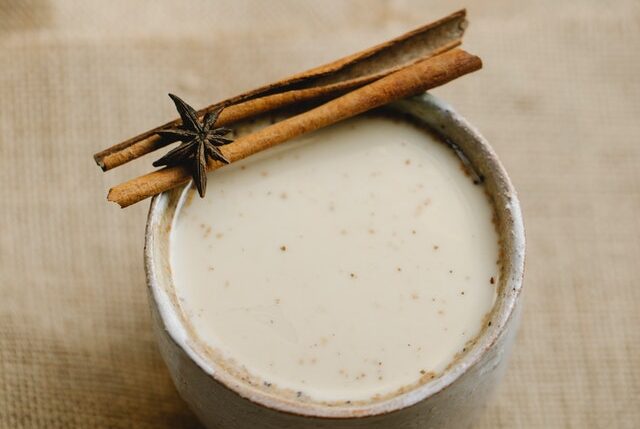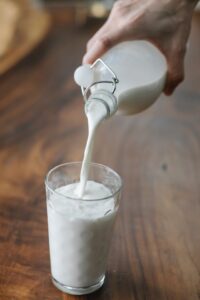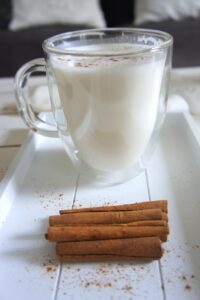I earn a small commission via affilate links at no extra cost to you.
Dairy free milk alternatives now take up a larger section of the grocery store than cow based products. When you visit your favorite coffee shop you can now choose from a collection of plant based milks, but which one is the best milk alternative? Is there such a thing as the healthiest non-dairy milk? Humans have consumed cow milk much longer than dairy free milk, is it really bad for the environment? We now have milk versus almond, oat, and coconut milk. I put a lot of research into this article to help you figure out which is the healthiest non-dairy milk, if that’s even possible. Let’s take a closer look.
The Environmental Impact of Almond Milk
In the United States almonds are grown in California which already has its water challenges and growing almonds further compounds the problem. It takes 1.1 gallons of water to produce a single almond, that is, 1 gallon of water per nut. [1] When you look at the ingredient label there’s a good chance that the most prevalent ingredient, the first ingredient listed, is water. While many manufacturers don’t want to disclose how many almonds are used in their almond milk. According to this source there are roughly 4-5 almonds in a serving of almond milk, the other 98.5% is water and additives.[2]
For an 8 oz serving of almond milk it’s roughly 8 0z of water plus 4-5 gallons of water to grow each almond.
Is Almond Milk The Healthiest Non-Dairy Milk?
The rest of the ingredients in almond milk, and most other plant-based milk alternatives, are fillers used to thicken the milk and enhance its texture. Odds are you’ll find things like gums, carrageenan, and lecithin to improve the texture of the milk so that it doesn’t seem like the water that it is.
From a health standpoint, almonds are high in oxalates. If you’re a person who gets kidney stones, you have chronic joint pain, or an autoimmune disease it’s probably best that you steer clear of almond milk for a bit.
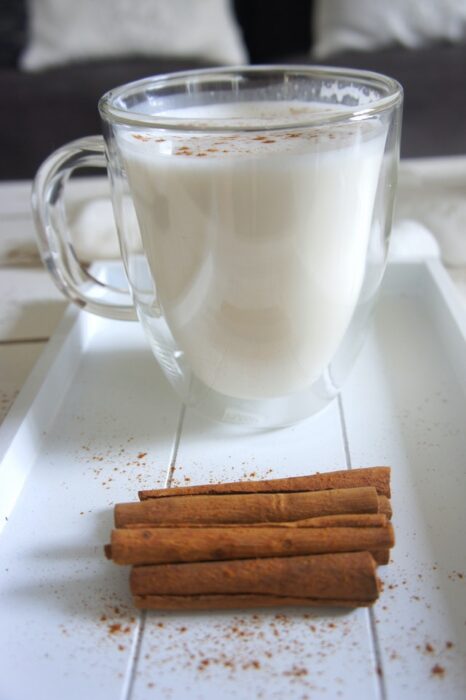
I know that most people assume that almonds and almond milk are a protein source, but what you eat isn’t necessarily what your body will absorb. A serving of almonds contains 6 grams of protein, but a one-cup serving of almond milk only contains 1 gram of protein. Nuts, grains, and seeds all contain phytates that bind to protein and prevent your body from absorbing it. They also bind the absorption of essential minerals like zinc, iron, magnesium, and calcium. [2]
Bottom Line On Almond Milk: You can consume this dairy free milk but it’s also not the healthiest non-dairy. milk. Here are the nutrition facts for Simple Truth™ Unsweetened Almond Milk:
- 30 Calories
- 2 Grams of Carbohydrates
- 3 Grams of Fat
- 1 Gram of Protein
- 1 Gram of Fiber
Is Oat Milk An Eco Friendly Milk Alternative?
Oat milk is not only bad for the environment, it’s also not great for you. Most oats are grown with glyphosate (Round-up) which leads to super weeds, adds to the depletion of our soils, is implicated in climate change, and also a number of gut health issues. As an eco-friendly milk alternative oats typically require 6 times less water than almonds, IF you’re measuring by the cup or individual oat and almond.[5]
Different types of oats require different amounts of water. Rolled oats are typically used to make oat milk and it takes 145 gallons of water to grow 1/2 lb of oats, or about 1 cup. [4] Most of the online recipes I could find to make oat milk at home use a 1:3 or 1:4 oats to water ratio. For 4 cups of water there’s 1 cup of oats, so that’s 145.25 gallons to make one 32 oz homemade batch of oat milk…not factoring in how much water gets discarded when you strain it.
What’s The Not So Skinny On Oat Milk?
If you’re not already in the know, wheat and oats are processed on the same equipment. For those who are following a “gluten free” diet you want to look for “gluten-free” oats. As a dairy free milk product would you believe that oat milk provides more protein than almond milk? I know, it has me scratching my head too. Like nuts, oats contain the phytates and lectins I mentioned above. This is likely why most plant based milk is fortified.
With a whopping 24 grams of carbohydrates in one cup, I wouldn’t consider this the healthiest non-dairy milk you can consume. For people who are looking to lose weight, you want to keep your carbohydrate consumption under 100 grams of carbohydrates a day. Considering an 8oz serving of oat milk would take up 1/4 of those 100 grams, you’re missing nutrition that you could get from vegetables for the same amount of carbohydrate consumption. When you consider that most people have weight loss success well below 100 grams of carbohydrates per day I can’t recommend regular oat milk consumption for anyone looking to lose weight.
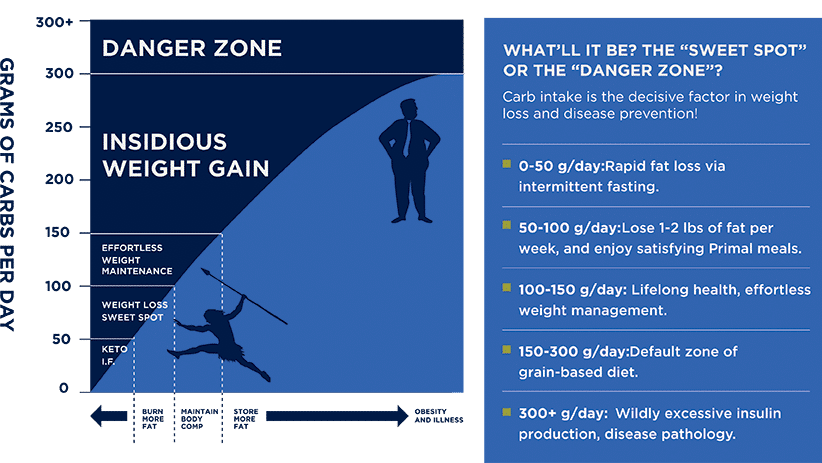
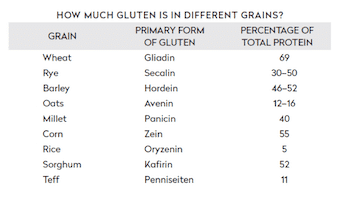
For those who are following a “gluten free” diet you want to look for “gluten-free” oats.
Image Source: No Grain, No Pain by Dr. Peter Osborne.
One cup of oat milk contains approximately: [6]
- 130 calories
- 24 grams carbohydrates
- 4 grams protein
- 2.5 grams fat
- 2 grams dietary fiber
Is Rice Milk Bad For The Environment?
Again, I hate to be the bearer of bad news but when it comes to environmental impact rice is a disaster. Global rice production is responsible for 12% of greenhouse gas emissions. Even more troubling is that the greenhouse gas primarily released from rice paddies is methane. Methane is 25% more potent as a greenhouse gas than carbon dioxide. [8]
Global rice production is releasing damaging greenhouse gases into the atmosphere, doing as much harm as 1,200 average-sized coal power stations, according to the Environmental Defense Fund (EDF).
World Economic Forum
In case you didn’t know rice is also a water hog. It takes 5,000 liters of water, or 1321 gallons, to produce 1 kilogram of rice. If you want to know if rice milk is bad for the environment I can definitely say it doesn’t look good.
Is Rice Milk A Healthy Dairy Free Milk?
When it comes to the human diet rice seems to get a green light pass in most circles, but should it? Asians eat rice and because they’re typically healthier than those living in the US most people don’t question whether rice is healthy. In the paleo world white rice walks a fine line. Some people incorporate it as a a resistant starch and others like myself do not.
The first thing to be aware of is the arsenic in rice. Arsenic is a carcinogen and brown rice has more arsenic and anti-nutrients than white rice. Simply factoring in arsenic content, one cup of rice milk makes up nearly 1/3 of your suggested weekly arsenic intake. [7] One-quarter cup of uncooked rice accounts for half of your weekly arsenic dose.
Let’s look at the nutrition facts for one serving of Rice Dream Classic Original Organic Rice Drink:
- 130 Calories
- 27 grams of Carbohydrates
- 12 grams of Added Sugar
- 0 grams of Protein
- 2.5 grams of Fat (from added vegetable oil)
- 0 grams of Fiber
Rice milk has more carbohydrates than oat milk plus there’s the arsenic factor combined with that methane thing… Personally I wouldn’t consider this the healthiest non-dairy milk.
The Environmental Impact of Hemp Milk
With its deep roots and thick canopy Hemp has been shown to improve soil structure. Plus it’s a great contender for organic farming since it’s easily grown without the use of herbicides, pesticides, or fungicides. [9]
It takes 3,685 liters of water used to produce 1 kilogram of hempseed or 442 gallons of water to produce 1 pound of hempseed.
Online recipes call for 1/2 cup of hempseed and 4 cups of water to make 4 cups of hemp milk.
1/2 cup of hemp seeds is roughly 4 oz.
442 gallons of water for 16oz / 4 oz = 110 gallons of water for 1/2 cup of hemp seeds
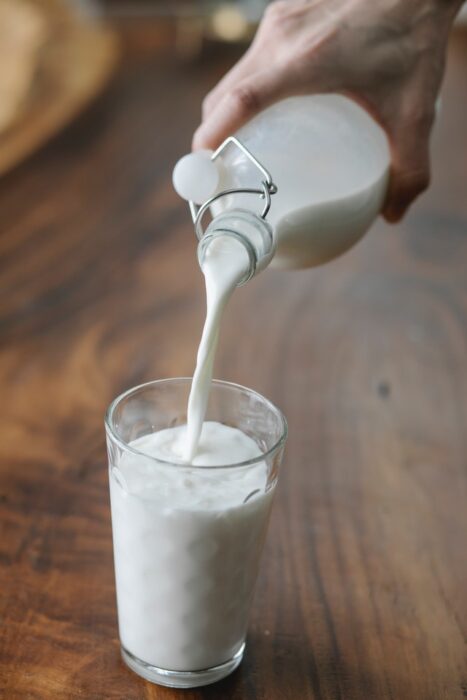
Pacific Foods Hemp Original Unsweetened Plant-Based Milk
- 60 Calories
- 0 grams of Carbohydrates
- 0 grams of Added Sugar
- 3 grams of Protein
- 4.5 grams of Fat
- 3.5 g polyunsaturated fat
- 0.5 monounsaturated fat
- 0 grams of Fiber
Although hemp has some environmental merits the polyunsaturated fats make this one easy to avoid. Polyunsaturated fats are inflammatory Omega 6 fats. The ideal Omega 3 to Omega 6 ratio for humans is 1:1 or 1:2. In today’s world most people are hovering around 1:20 or even as high as 1:35, so NO, you don’t need more Omega 6 fats.
Polyunsaturated fats are unstable molecules that are prone to oxidation, i.e. aging. Oxidation is the reason people take anti-oxidants. I’d have to list hemp milk as one of the unhealthiest non-dairy milks you could buy.
Is Coconut Milk Bad For The Environment?
For those of us living a significant distance from the region where coconuts can be grown you must ask yourself if that matters to you. The average distance a coconut travels to the United States is 5400 miles. [10] Cargo ships are responsible for 3% of global greenhouse gas emission worldwide which is more than airplanes. [11] Just because you can buy it in the store or order it online doesn’t always mean you should if you’re worried whether your milk is bad for the environment.
The amount of water a coconut tree needs greatly depends on the soil it’s grown in. A coconut tree can take anywhere from 600 – 1600 liters of water per day. [12] On tree produces 30-75 fruits a year with 30 being the typical number. As trees age they produce fewer coconuts.
Is Coconut Milk The Best Milk Alternative?
Coconut milk still gets a bad rap because it’s high in saturated fat, even though saturated fat poses no health risks to humans, nor has it ever. [13] Inflammation is bad for humans, saturated fat is not.
See, there was this kid in the 1950’s named Ancel Keys who came up with the hypothesis that saturated fat caused heart disease. As it turns out he omitted 2/3 of his data and ruined the career of anyone who said, “I think sugar is the problem.” The American Heart Association got its initial funding from Crisco in the early 1900’s, which is why vegetable oil still gets a free pass.
Anyway, enough about saturated fat. That’s a post all in itself.
Since I’ve been using boxed milks for the nutrition facts above I selected one for this example. Personally I never buy milk in a box unless it’s Arroy-D because just like this example below, they contain the additives I mentioned earlier.
365 by Whole Foods Market, Coconut Milk Unsweet Original Organic
- 50 Calories
- <1 grams of Carbohydrates
- 0 grams of Added Sugar
- <1 grams of Protein
- 5 grams of Fat
- 5 grams saturated
- 0 grams of Fiber
The other thing to be mindful of is plastic. Foods that are high in fat like coconut or acidity like tomatoes, will absorb plastic from the container they are housed in. When shopping for the healthiest non-dairy milk always consider the packaging.
Cow’s Milk Versus Dairy Free Milk
First let’s get a couple of things straight. Cows aren’t water hogs despite what the plant based community wants you to think. There are many errors in the ideas that cows are bad for the planet. Take water for example. When figuring out how much water a cow needs they add rainfall to the calculation. The rain is going to fall whether a cow is standing there or not. Grass finished beef and conventional beef use 97% and 94% respectively when it comes to rain water.
Conventional beef can attribute 3% of its water consumption to a fresh water source. Grass finished, only 2%. The remaining 3% & 1% come from gray, or recycled water. Other calculation errors included when cattle management, pasture health, and local climate are overlooked in estimates. Plus, roughly 30% of what cattle consume is returned to the pasture via manure and urine – both beneficial to pasture health.
For example, sifting through the interwebs I came across the claim that it takes 1800 gallons of water to produce 1 lb of beef when in reality it’s only 280 gallons. [14] Well managed animals are the only carbon negative food source that can possibly reverse climate change via our food system. None of the dairy free milks can ever claim carbon neutrality.
A life cycle assessment of the dairy industry: [15]
The Life Cycle Assessment focused on fluid milk and showed the industry accounts for:
- less than 2% of total GHG emissions in the U.S.;
- 5.1% of water use;
- and 3.7% of U.S. farmland.
Meanwhile, on the farm, the environmental impact of producing a gallon of milk in 2017 shrunk significantly from 2007, requiring:
- 30% less water;
- 21% less land; and a
- 19% smaller carbon footprint.
Cows drink 4-5 liters of water a day per kilogram of milk produced. [16]
Is Cow Milk Healthy?
Honestly your ability to digest milk largely depends on your genetic inheritance and gut health. If you’re sensitive to gluten, have skin issues, allergies, struggles with weight loss, or an autoimmune condition you may want to try going dairy free for a month or so to see what changes. Some people find they tolerate A2 dairy better because the casein protein is better digested by some. Others claim raw dairy is the absolute best because it contains the components necessary for humans to properly digest milk.
Whole milk is preferable to skim milk because it contains fat to fill you up. Low and reduced fat milks are essentially sugar bombs once they’re digested.
How Do The Various Milks Compare?
The figures below might shock you. Since most recipes call for 1 cup (8 oz) of rice, oat, hemp, etc per 4 cups (32 oz) of water that is the default recipe I used in my calculations. Almonds, coconut, and cow milk were the exceptions. There are only 4-5 almonds in an almond milk recipe. One coconut produces roughly 1 pound of meat so I used 1/2 a coconut for my calculations. As for cows I used the figure above where 4-5 liters of water is drank per kilogram of milk produced.
All of the figures in the table below are given above, other than I had to do a bit of math to convert everything to ounces and then 8 oz servings.
- Although almonds are a water hog the saving grace is that they use so few in almond milk. I still don’t consider it a sustainable dairy free milk source given that most are grown in drought stricken California.
- Coconut milk came in as the water hog. Since there is such a discrepancy on how much water they use I went with median numbers of 1100 liters / day with an estimate of 50 coconuts / year.
- Hemp has many other sustainable uses but the water consumption and polyunsaturated fats make this one a hard pass. It’s definitely not the healthiest non-dairy milk.
- In terms of nutrition and sustainability Cow Milk is the winner and it’s not bad for the environment.
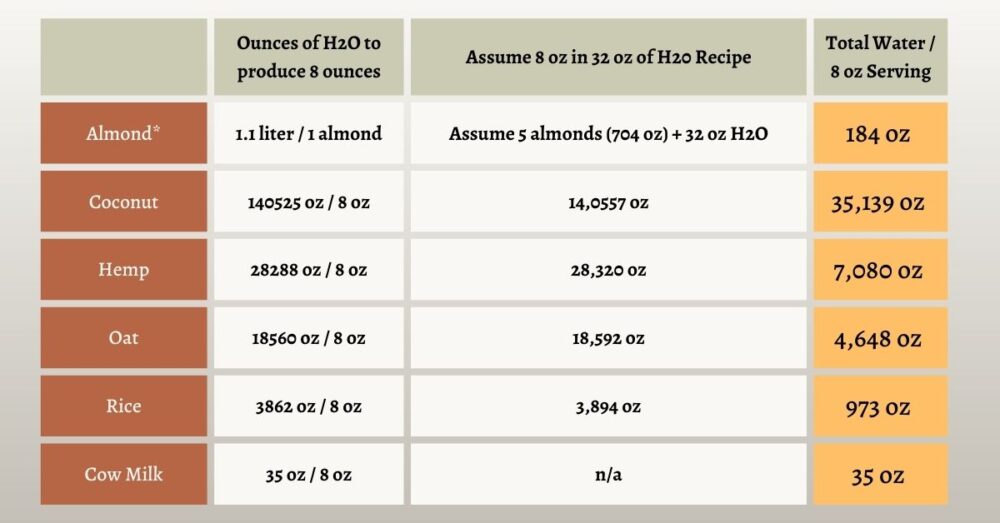
Recommended Reads:
[1] https://www.businessinsider.com/amount-of-water-needed-to-grow-one-almond-orange-tomato-2015-4
[2] https://buildingwithdairy.com/how-many-almonds-are-actually-in-almond-milk/
[3] https://www.ncbi.nlm.nih.gov/pmc/articles/PMC4325021/
[4] https://ixwater.com/cow-almond-and-oat-milk-take-how-much-water
[5] https://www.treehugger.com/things-know-about-oat-milk-plus-how-make-your-own-4858517
[6] https://www.pacificfoods.com/organic-oat-original
[7] https://www.consumerreports.org/cro/magazine/2015/01/how-much-arsenic-is-in-your-rice/index.htm
[8] https://www.weforum.org/agenda/2019/06/how-rice-is-hurting-the-planet/
[9] https://www.researchgate.net/publication/267766816_Ecological_benefits_of_hemp_and_flax_cultivation_and_products
[10] https://www.foodmiles.com/food-miles-info.cfm?fm=coconut
[11] https://yaleclimateconnections.org/2021/08/maritime-shipping-causes-more-greenhouse-gases-than-airlines/
[12] http://www.celkau.in/crops/Plantation%20Crops/Coconut/watermanagement.aspx

[13] https://draxe.com/nutrition/coconut-milk-nutrition/
[14] https://amzn.to/3CJ5k2X
[15] https://www.usdairy.com/news-articles/dairy-farmers-advance-environmental-practices-get-results
[16] https://www.amelicor.com/blog/how-much-water-should-a-cow-drink-every-day
Originally posted on March 16, 2022 @ 14:48

